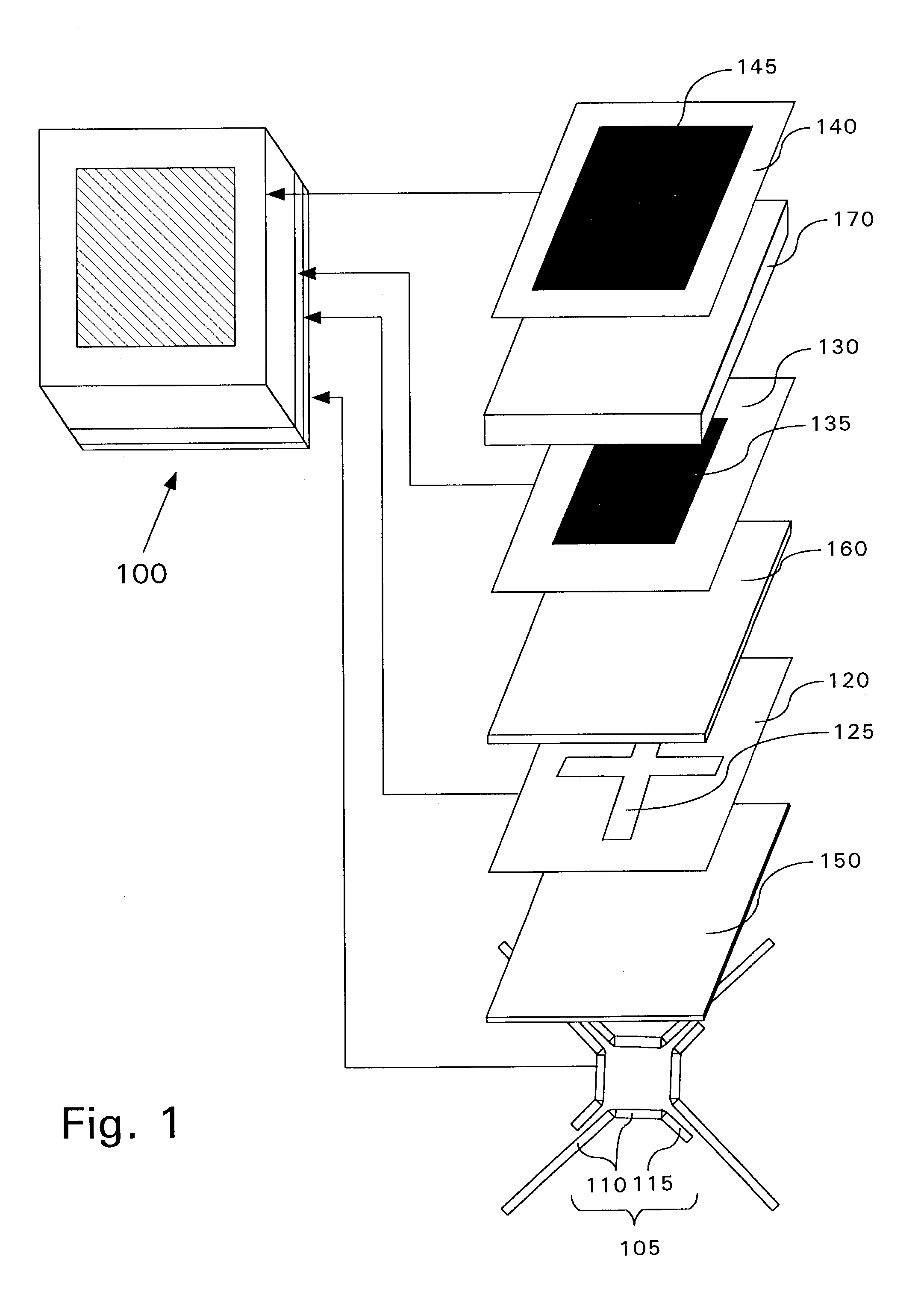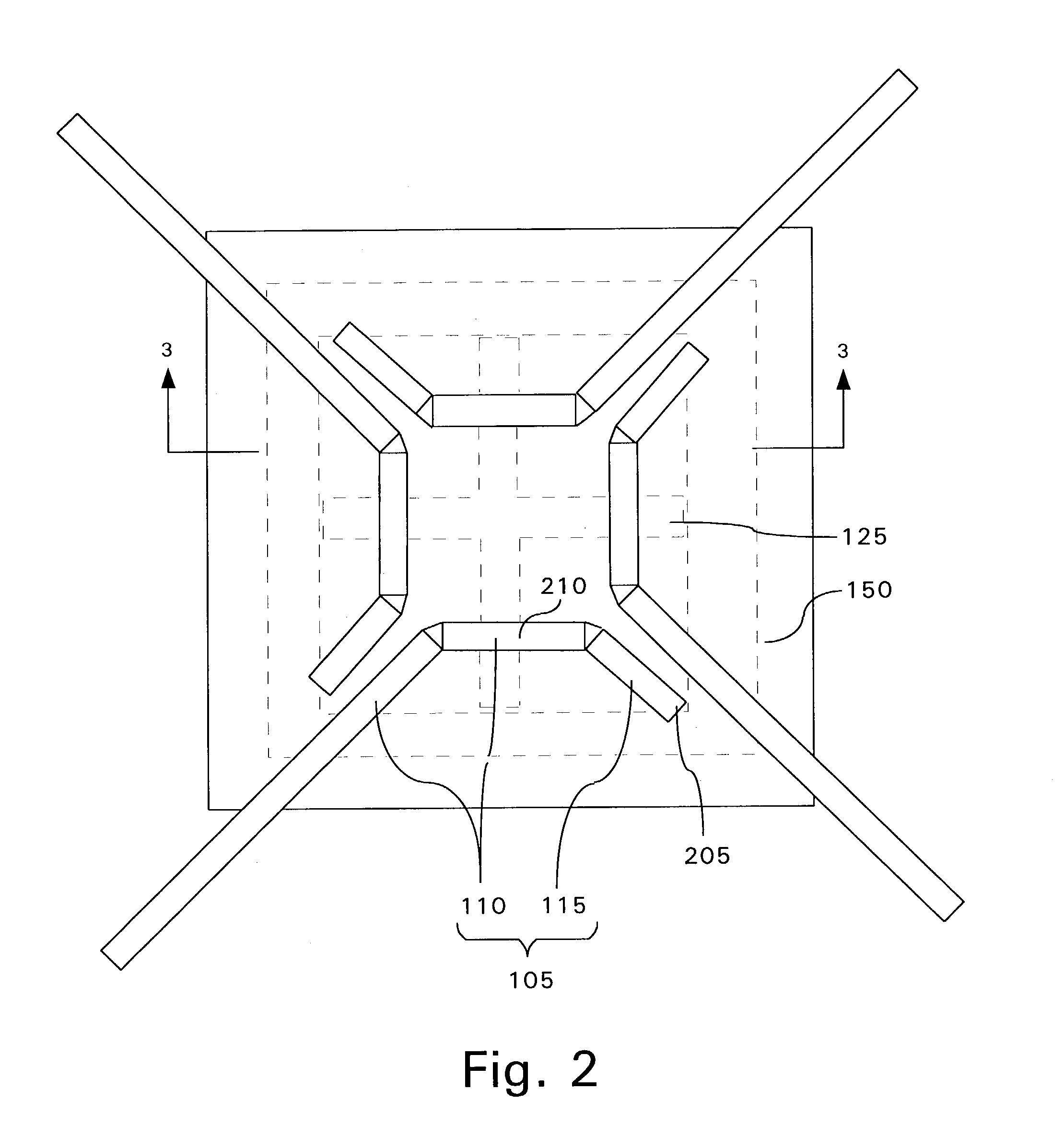High efficiency crossed slot microstrip antenna
a microstrip antenna and high efficiency technology, applied in the direction of slot antennas, antenna details, antennas, etc., can solve the problems of inability to meet the requirements of inability to meet the requirements of a given substrate, and the line width required for exceptionally high or low characteristic impedance values can be too narrow or too wide for practical implementation on a given substrate, etc., to achieve different substrate properties.
- Summary
- Abstract
- Description
- Claims
- Application Information
AI Technical Summary
Benefits of technology
Problems solved by technology
Method used
Image
Examples
Embodiment Construction
[0027]A crossed slot fed microstrip antenna has reduced size, but provides increased efficiency. The crossed slot fed microstrip antenna may also provide enhanced bandwidth. The improved microstrip antenna is formed by locally controlling the effective permittivity and / or effective permeability of one or more dielectric layer portions comprising the antenna.
[0028]Low dielectric constant board materials are ordinarily selected for RF designs. For example, polytetrafluoroethylene (PTFE) based composites such as RT / duroid® 6002 (dielectric constant of 2.94; loss tangent of 0.009) and RT / duroid® 5880 (dielectric constant of 2.2; loss tangent of 0.0007) are both available from Rogers Microwave Products, Advanced Circuit Materials Division, 100 S. Roosevelt Ave, Chandler, Ariz. 85226. Both of these materials are common board material choices. The above board materials are uniform across the board area in terms of thickness and physical properties and provide dielectric layers having relat...
PUM
 Login to View More
Login to View More Abstract
Description
Claims
Application Information
 Login to View More
Login to View More - R&D
- Intellectual Property
- Life Sciences
- Materials
- Tech Scout
- Unparalleled Data Quality
- Higher Quality Content
- 60% Fewer Hallucinations
Browse by: Latest US Patents, China's latest patents, Technical Efficacy Thesaurus, Application Domain, Technology Topic, Popular Technical Reports.
© 2025 PatSnap. All rights reserved.Legal|Privacy policy|Modern Slavery Act Transparency Statement|Sitemap|About US| Contact US: help@patsnap.com



